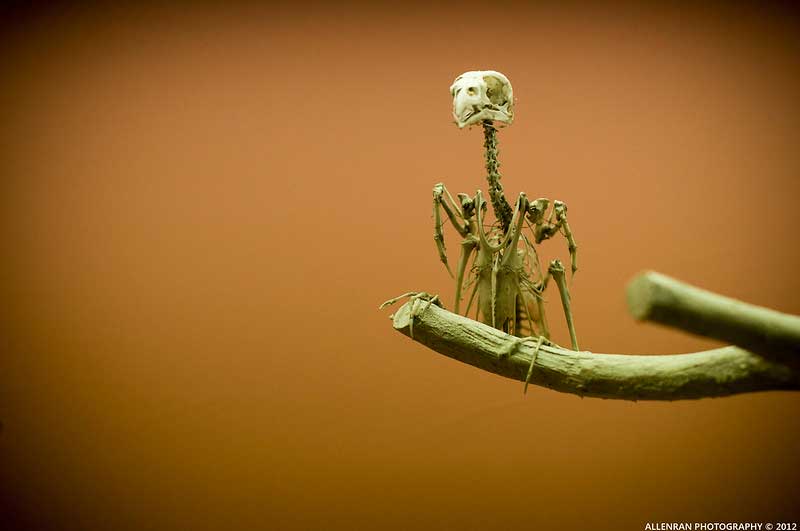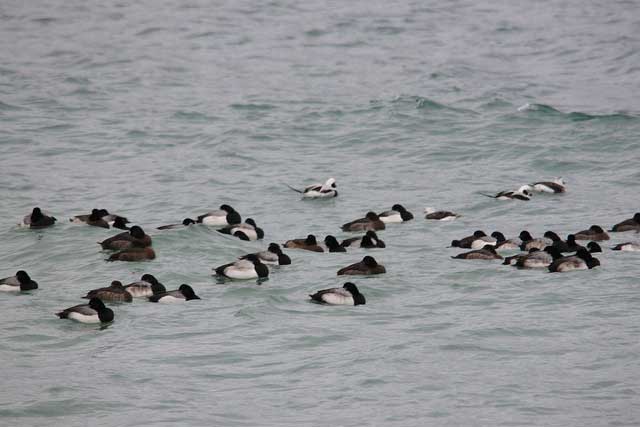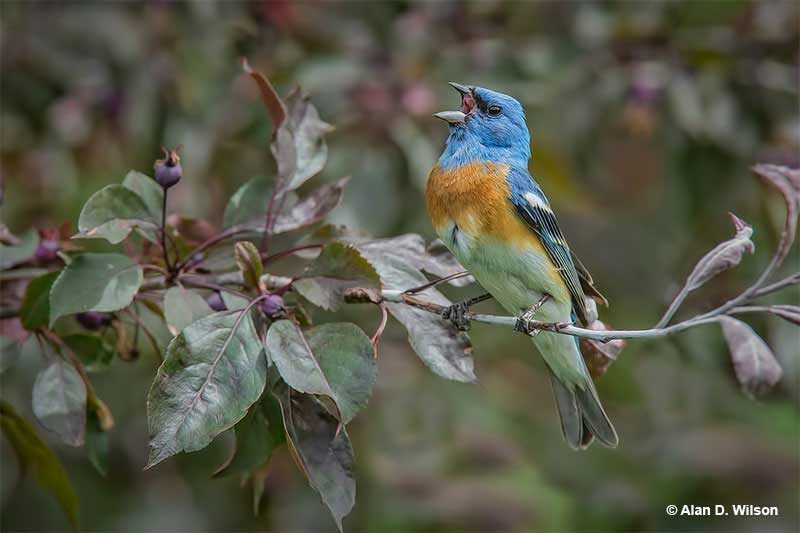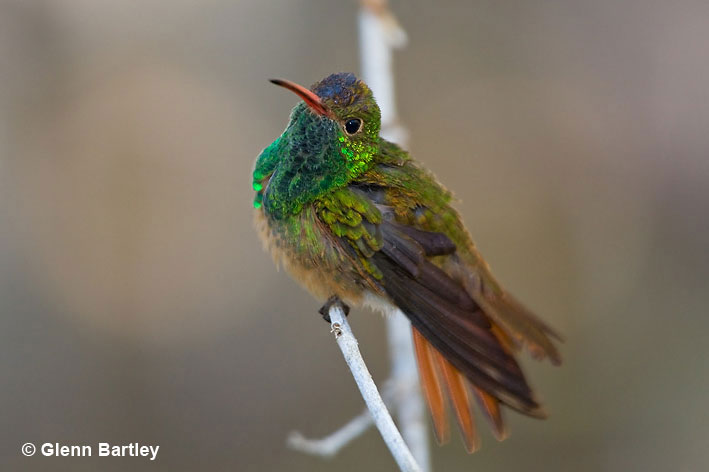Both humans and birds are vertebrates and have skeletons. In the 16th century, French naturalist Pierre Belon made a groundbreaking comparison between them, highlighting their similarities and differences. His work laid the foundation for comparative anatomy.
But what exactly does a bird’s skeleton look like? What are its unique characteristics, and how does it differ from the human skeleton?
What does a bird’s skeleton look like?
A bird’s skeleton is a marvel of natural engineering, perfectly adapted for flight while providing essential body support.
Their bones are filled with small air sacs which connect to their respiratory system and enhance oxygen uptake. This lightweight construction reduces their overall body weight, making the process of takeoff and staying aloft much easier.
Despite being hollow, their bones aren’t as fragile as you might think and are actually quite dense; they are reinforced with internal struts that provide the necessary structural strength, creating a honey-comb-like structure.
Additionally, many of them are fused together, reducing the total number of bones and providing the rigidity necessary for enduring flight. Unlike mammals, birds lack teeth and instead have bills, which are much lighter and streamlined.
All in all, picture a streamlined skull with a bill, a long and flexible neck, a broad sternum with a pronounced keel, wings with long, thin bones and fused hand bones, and a strong pelvis and legs with long, fused bones for stability and support – that’s what a bird’s skeleton looks like. Now, let’s explore the specific bones and their unique purposes in more detail.

(1) Skull (2) Cervical vertebrae (3) Furcula (medially fused clavicle) (4) Coracoid (5) Ribs (6) Sternum (with carina) (7) Rotula (8) Tarsometatarsus (fused metatarsals, fused with the distal tarsal bones) (9) Hallux (1st toe) (10) Tibiotarsus (tibia fused with the proximal tarsal bones) (11) Fibula (12) Femur (13) Pubis (14) Ischium (15) Ilium (16) Caudal vertebrae (17) Pygostyl (fused posteriormost caudal vertebrae) (18) Synsacrum (posterior dorsal and sacral vertebrae fused with the ilium) (19) Scapula (20) Dorsal vertebrae (21) Humerus (22) Ulna (23) Radius (24) Carpometacarpus (fused metacarpals, fused with the distal carpal bones) (25) 3rd finger (26) 2nd finger (27) Alula (1st finger).
Skull
Bird skulls, like most other parts of their body, are highly adapted for flight. They consist of five major non-overlapping bones and are hollow with air cavities, normally weighing only about 1% of the bird’s body weight.
Their eye sockets are large, making up roughly half the skull’s volume, and are surrounded by a ring of tiny bones. The orientation of that ring significantly affects the eye’s appearance.
Additionally, birds have bills instead of jaws and teeth, which are generally streamlined and help the bird cut through the air.
Different species have additional unique adaptations. For example, woodpecker skulls have evolved to absorb shock from constant pecking, while owls’ asymmetrical skulls provide exceptional hearing to locate prey.
Cervical vertebrae
The cervical vertebrae make up the first section of the vertebral column in birds and provide structural support to the neck.
While almost all mammals, from mice to humans to giraffes, have 7 of them, then this number varies significantly between bird species. Most birds have between 13-15 cervical vertebrates, with some species having as little as 8 and some, such as swans, as many as 25.
This gives them a highly flexible neck, aiding in various activities such as preening, foraging, flight, and predator evasion. It also provides stability during fast movements. You may also see some birds bob their heads – this helps them stabilize their vision.
Furcula
The furcula, more commonly known as the wishbone, is a unique, typically U- or V-shaped bone found in birds.
The size and shape of the furcula can vary significantly among bird species, reflecting differences in flight styles and habits. It is formed by the fusion of the two collarbones (clavicles) and is located at the front of the bird’s chest at the base of their neck between the shoulders.
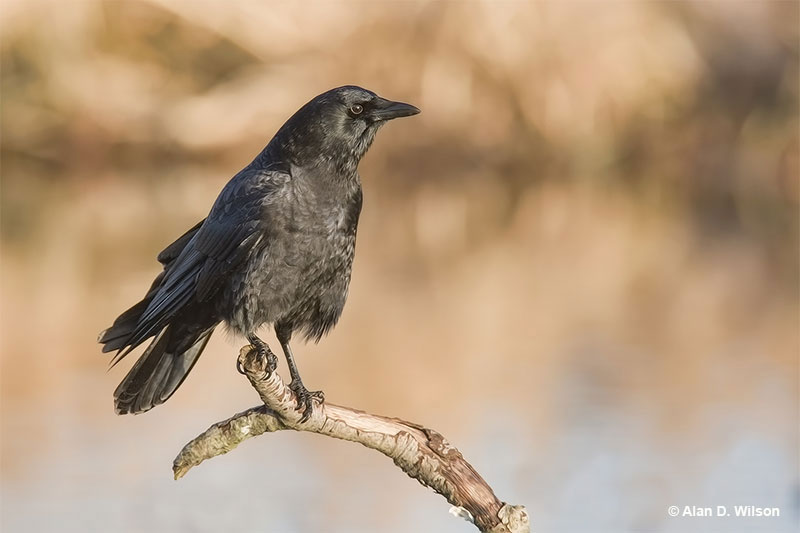
The furcula is considered one of the features that define modern birds and plays several important roles. It provides an attachment point for the flight muscles, particularly the pectoralis muscles, which are responsible for powerful wing movements.
When the bird flaps its wings, the furcula flexes and helps absorb the stresses placed on the chest, acting like a spring by storing and releasing energy, aiding in the powerful downstrokes and upstrokes necessary for flight.
By connecting the two sides of the bird’s skeleton, the furcula also helps stabilize the shoulder girdle, ensuring that the wings are held firmly in place and can move efficiently. Some flightless birds, like ostriches, have lost their furcula over evolutionary time.
Coracoid
The coracoid is a strong, pillar-like bone in the shoulder region that extends from the sternum to the shoulder joint. It acts like a strong bridge, helping support the chest during flight.
This bone provides a place for important flight muscles to attach. These muscles, especially the pectoralis (used for the downstroke of the wing) and the supracoracoideus (used for the upstroke), need a strong anchor to generate the force required for flying.
Without the coracoid, the bird’s chest would collapse under the pressure of wing flapping. Birds with different flight styles (e.g., soaring, flapping, gliding) exhibit variations in the coracoid’s size and shape.
For example, soaring birds like eagles have strong, robust coracoids to support powerful wing muscles, while smaller, agile birds may have lighter, more slender coracoids. In flightless birds, such as ostriches, the coracoid is often reduced in size compared to flying birds.
Uncinate processes of ribs
The uncinate processes of ribs are small, bony projections that extend from the rear edge of each rib backward, resembling spurs.
They provide attachment points for scapula muscles, help strengthen the ribcage by overlapping with the rib behind them creating a more rigid and stable structure, and also have a role in increasing the efficiency of respiration by helping maintain the shape of the thoracic cavity.
Their length varies among species, correlating with their main method of movement. Birds that mainly walk have short ones, diving species have long ones, and non-specialist species have intermediate-length ones.
In adult birds, these bones are normally fused to the ribs and cannot be detached without breaking them.
Keel
The keel is a prominent, ridge-like structure running along the midline of a bird’s sternum (breastbone).
It provides a large surface area for the bird’s powerful flight muscles to attach to, particularly the pectoralis major and the supracoracoideus.
These muscles are responsible for the downstroke and upstroke of the wings, respectively. A well-developed keel allows the bird to generate the necessary force for flight.
It also adds structural support to the bird’s chest and helps maintain the rigidity and shape of the thoracic cavity, which is important for both flight and respiration.
In species that are strong fliers, such as swifts and hummingbirds, the keel is highly developed to support their powerful and rapid wing beats. Flightless birds, such as ostriches and emus (ratites), lack a keel or have a greatly reduced keel.
Patella
The patella in birds is a small, flat bone located at the front of the knee joint that provides protection and enhances movement efficiency. You might know it as the kneecap in humans.
It provides a surface for the attachment of the tendons of the quadriceps muscle group. This connection is essential for the movement and extension of the lower leg.
When the quadriceps contract, the patella acts as a lever and helps transmit this force, allowing the bird to straighten its leg more smoothly and powerfully. The patella also helps protect the knee joint by covering and safeguarding the front of the joint, helping prevent injuries to the knee during activities like landing, walking, and jumping.
Tarsometatarsus
The tarsometatarsus is located between the bird’s lower leg and its toes. It forms the upper part of the foot; imagine it as a single elongated bone that is a fusion of the lower leg bones and upper foot bones.
This fusion of tarsal and metatarsal bones into a single structure is a unique avian adaptation, not found in other vertebrates.
It serves as the main weight-bearing bone in the bird’s foot, its strength and rigidity helping maintain stability and its structure allowing for efficient transfer of muscle forces, enabling birds to move quickly and with agility.
The length and structure of the tarsometatarsus can vary among bird species, reflecting their specific adaptations. For example, birds that run, like ostriches, have a long and robust tarsometatarsus for speed and endurance, while birds that wade have extremely elongated ones.
Digits (toes)
In birds, the digits are what we call their toes. They provide balance, and stability and are crucial for walking, running, perching, landing, feeding, and more.
Most birds have four toes, but some have three, and a few species, such as ostriches, even have two. The most common arrangement is anisodactyl, with 3 toes pointing forward and 1 toe pointing backward.
Some birds have other arrangements evolved for their specific lifestyle. Birds who need to grasp and climb, like woodpeckers or parrots, often have zygodactyl feet where two toes point forward and two backward.
Syndactyl arrangement is similar to anisodactyl, but some toes are fused, whereas in pamprodactyl feet all four toes are pointing forward.
Tibia (tibiotarsus)
The tibia, also known as tibiotarsus is a combination of the lower leg bone (tibia) and some of the upper ankle bones fused together.
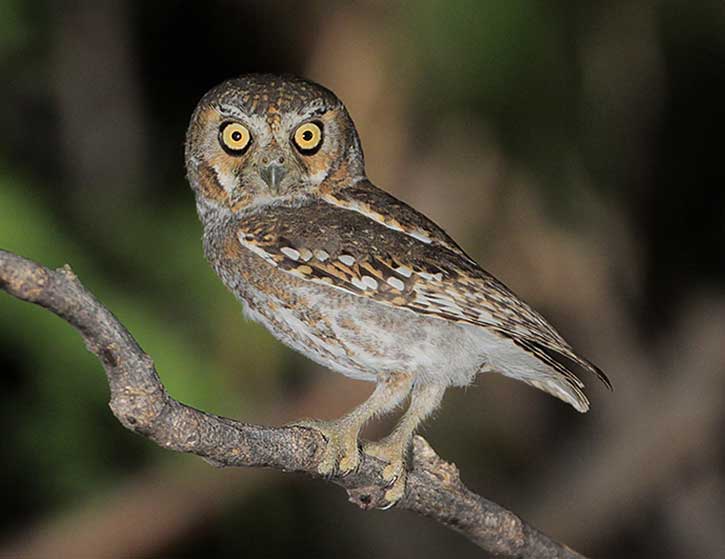
It’s like the big bone in your lower leg that helps you stand and walk. You can find it between the femur (thigh bone) and the tarsometatarsus (the bone connecting to the toes), essentially forming the middle segment of the bird’s leg.
It is the main weight-bearing bone in the bird’s lower leg, serving as an attachment point for important leg muscles and connecting the knee to the ankle, providing stability for standing, walking, running, and landing.
Fibula
While most other vertebrates have a fibula that is similar in length to the tibia and plays a significant role in leg movement then, in birds, it is typically a thin, splinter-like bone that is much shorter than the tibia and often doesn’t even reach the ankle.
Although it is not as prominent as the tibia, it still provides additional support and stability to the leg, helping maintain the alignment of the leg bones and serving as an attachment point for some of the leg muscles and ligaments.
These muscles, while mainly attached to the tibia, also benefit from the presence of the fibula for additional leverage and strength. The reduced size of the fibula in birds is an evolutionary adaptation to make the leg lighter, which is crucial for flight. Penguins are an exception, having a full-length fibula that reaches the ankle.
Femur
The femur in birds is the upper leg bone that connects the hip to the knee.
It’s similar to the thigh bone in humans. This bone is usually short yet strong and robust, positioned more horizontally compared to mammals, helping birds maintain a lower center of gravity, which is important for balance and stability.
It supports the bird’s bodyweight and is involved in both standing and movement. The length and robustness of the femur can vary significantly among bird species, reflecting their different modes of locomotion and ecological niches.
In flying birds, the femur is adapted to support the powerful muscles required for flight takeoff and landing. Its structure helps absorb the impact forces during landing. In running birds like ostriches, the femur is more robust to support their large body size and running ability.
Ischium
In birds, the ischium is one of the three bones fused together that make up the pelvis, along with the ilium and pubis. It is located towards the back and lower part of the pelvis.
The ischium works together with other bones in the pelvis to form a strong framework that supports the bird’s legs and tail and also provides attachment points for muscles involved in leg movement and stabilization.
Think of it like a sturdy base that helps support the bird’s weight, especially when they are sitting or standing. In female birds, the shape and orientation of the ischium help accommodate the passage of eggs through the reproductive tract.
Pubis
The pubis is a narrow strip of bone that runs alongside the other two pelvic bones: ilium and ischium. It helps form the pelvis’s structure and provides support for the bird’s abdominal organs and stability to the pelvis.
In many birds, the pubis points backward and is positioned parallel to the ischium. This arrangement allows more space for the bird’s digestive and reproductive systems. The shape and position of the pubis also make the bird’s body more streamlined for flight while still providing the necessary support and stability.
Ilium
The ilium in birds is a large, flat bone that makes up the upper part of the pelvis.
It connects to the spine and the bird’s leg muscles, its large surface area helping to distribute the bird’s weight evenly.
This is important for balance and stability. It also helps protect the bird’s internal organs and plays a crucial role in maintaining the bird’s overall body structure.
Caudal vertebrae
The caudal vertebrae in birds are located at the end of the bird’s spine and provide the structural framework for the bird’s tail. Different species have a different amount, from 5 to 8, but their core function is the same.
They provide support and flexibility to the bird’s tail, allowing it to move in various directions. This movement helps birds with balance, steering, and braking during flight. The tail is also used for communication and display in many species.
Pygostyle
The pygostyle in birds is a specialized bone located at the very end of their spine, formed by the fusion of the last few caudal (tail) vertebrae.
It provides a strong and stable base for the attachment of the bird’s tail feathers, which act as rudders to help with steering, braking, balancing, and other precise adjustments during flight. Muscles that control the movement of the tail feathers are also attached to it.
Synsacrum
The synsacrum in birds is a unique, fused bone structure in their lower back, between dorsal and caudal vertebrae.
It’s made by the fusion of several vertebrae from the lower spine, including the last dorsal, all the lumbar, sacral, and a few of the first caudal vertebrae. This fusion creates a strong and rigid platform.
The synsacrum serves several important functions. It gives stability during walking and running, protects internal organs, and offers solid support for the bird’s pelvis, helping to absorb the impact when the bird lands. This rigidity is also essential for flight, as it helps maintain a streamlined and stable body shape.
Scapula
The scapula in birds, also known as the shoulder blade, is a long, thin, sword-shaped bone located on both sides of the bird’s body.
It connects to and works with other bones in the shoulder girdle, including the coracoid and the furcula, providing structural support, serving as an attachment point for several flight muscles, and allowing for a wide range of motion.
The scapula also helps stabilize the shoulder joint during the flight, ensuring that the wings remain securely attached to the body. Like with many other bones, the specific shape and size can vary among species and directly influence the bird’s flight performance.
For example, the scapula of soaring bird may be longer and slenderer, allowing for a greater wingspan and improved aerodynamics, while birds that tend to flap rapidly may have a broader and more robust scapula.
Dorsal vertebrae
In birds, the dorsal vertebrae, including the thoracic vertebrae, are the bones that make up the middle part of their spine, located between the neck (cervical vertebrae) and the lower back (synsacrum).
They play a key role in supporting the bird’s ribcage and providing attachment points for the ribs. This structure helps protect the bird’s internal organs, like the heart and lungs, and maintain the shape of the bird’s body.
Additionally, the dorsal vertebrae are involved in the movement and flexibility of the bird’s body. They help the bird maintain posture and balance, especially during flight. The structure of these vertebrae allows the bird to withstand the stresses of flight and other activities.
In many birds, some of the dorsal vertebrae are fused to provide extra stability and strength, which is crucial for flight.
Humerus
The humerus in birds is the upper arm bone that connects the shoulder to the elbow. It’s a strong, lightweight, and relatively short bone that provides the main structural support for the upper wing and serves as an attachment point for the main flight muscles.
When a bird flaps its wings, the humerus acts as a lever by efficiently transferring muscle power to the wing, helping to generate lift and propulsion. The shape and size of the humerus vary among bird species, reflecting different flight styles and ecological niches.
In flying birds, as body mass increases, the humerus tends to become longer and thinner relative to body size. On the other hand, in flightless birds, the humerus tends to be shorter and thicker in heavier birds.
Ulna
The ulna in birds is one of the two long bones in the forearm, located alongside the radius.
It runs from the elbow to the wrist and is typically thicker, longer, and stronger than the radius and significantly contributes to the strength and rigidity of the bird’s wing, essential for withstanding the forces generated during flight.
The bone provides attachment points for various muscles and tendons that control the wings movement, helping in flexing and extending the wing.
When a bird flaps its wings, the ulna works with the radius and other wing bones to facilitate smooth and powerful wing movements.
It is also notable for its role in anchoring secondary flight feathers. These feathers are attached to the ulna via a series of tubercles (small, rounded projections) along its length and are essential for flight, providing the needed lift and thrust.
Radius
The radius is a crucial bone located alongside the ulna in the forearm, contributing significantly to the wing’s structure and function.

Though thinner and shorter than the ulna, the radius plays a vital role in maintaining the wing’s integrity and flexibility. It supports wing movements by allowing it to bend and extend, essential for various flight maneuvers such as flapping, gliding, and turning. It also provides attachment points for muscles and tendons that control wing movements, allowing precise adjustments during flight.
Carpometacarpus
The carpometacarpus, following the ulna and radius, is a unique bone in the wing that results from the fusion of some of the wrist (carpal) and hand (metacarpal) bones, resulting in a single, elongated bone.
This strong yet flexible structure connects the “finger” digits of the bird’s wing and supports the primary flight feathers, which are essential for generating lift and thrust during flight.
It also allows for necessary flexibility and movement of the wing by working with other wing bones, such as the radius and ulna, to extend, fold, and manipulate its wings and primary feathers, which is vital for different flight maneuvers.
The shape and size of the carpometacarpus can vary among species and also affects the attachment and arrangement of flight feathers. For instance, birds that require rapid maneuverability may have a more elongated or differently shaped carpometacarpus to enhance wing flexibility and control.
Wing digits (and alula)
- Birds have three main digits (or “fingers”) in their wings, which are remnants of their evolutionary ancestors. These digits are:
Digit I: Also known as the “thumb,” this digit supports the alula, a small set of feathers that can be moved independently of the rest of the wing that birds use to fine-tune their flight. It helps to control the airflow over the wing, helping with maneuverability, reducing turbulence, and preventing stalling when the bird is flying low, slow, or landing. - Digit II: This is the longest digit and is central in the wing structure, supporting many of the primary flight feathers.
- Digit III: The smallest of the three digits, this digit also supports some of the primary feathers and helps fine-tune wing movements.
FAQ
What is a bird’s skeleton called?
A bird’s skeleton may also be called an avian skeleton.
What is unique about a bird’s skeleton?
Bird skeletons exhibit several unique adaptations that are primarily there to better facilitate flight. It is lightweight yet strong, with fused bones and air-filled cavities that aid in flight, among other things.
How fragile are bird bones?
Bird bones are lightweight and contain air sacs, but their honey-comb structure is remarkably strong and resilient, enabling them to withstand the stresses of flight.
Do birds have a spine?
Birds have a spine composed of vertebrae that provide support and flexibility.
